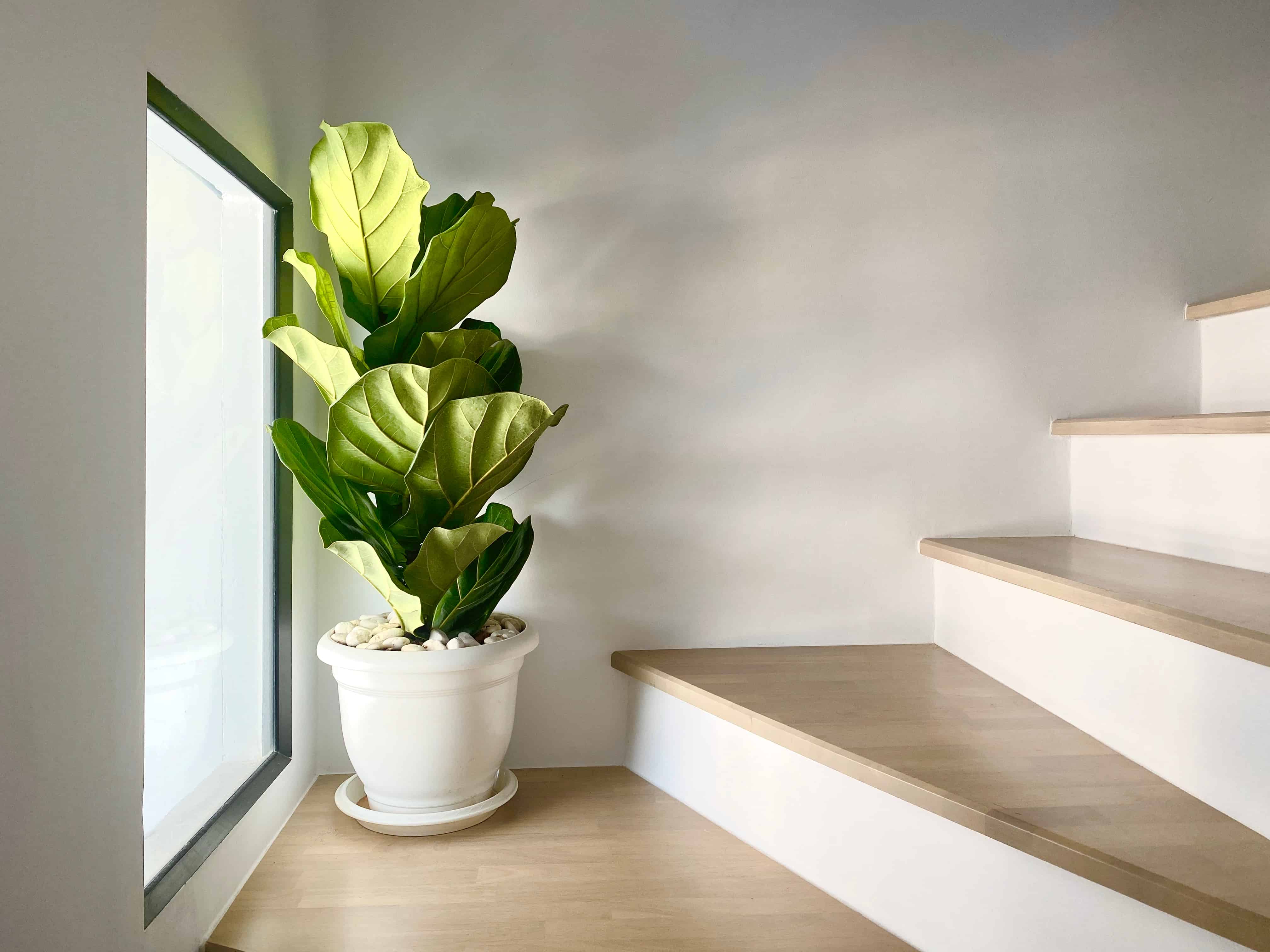Ficus lyrata is the trendy and ever-popular fiddle-leaf fig. It’s native to tropical Africa from Cameroon to Sierra Leone’s lowland rainforests. Still, it’s grown across the world as a houseplant in temperate zones and outdoors in tropical to sub-tropical areas.
It’s hard not to love this luscious leafy plant. Instagrammers and interior designers can’t get enough of fiddlers because they have such a presence and the impressive ability to totally transform a room by just standing there!
Ficus lyrata has a difficult reputation, but once you’ve got to grips with its needs there’s no reason why it won’t flourish in your home or sunny garden. For an in-depth guide to fiddle-leaf figs, here’s all you need to know.
Growing an Indoor Fiddle-leaf Fig Tree
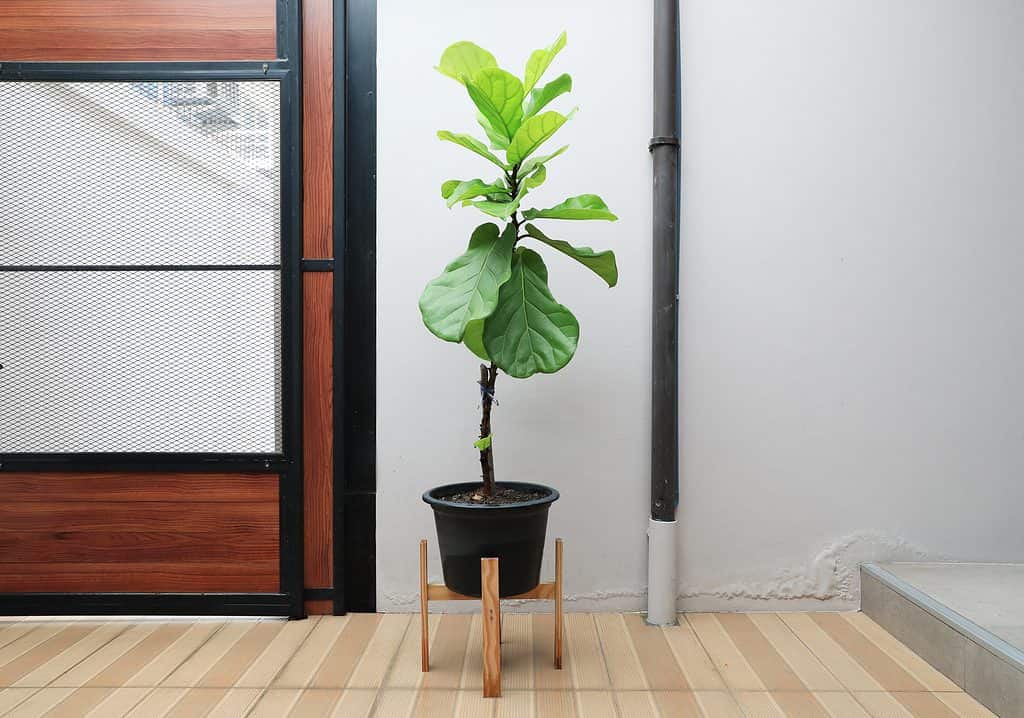
If you want to grow a fiddle-leaf fig indoors, several factors are essential to your success.
©drpnncpptak/Shutterstock.com
Growing an indoor Ficus lyrata is all about getting 6-8 hours of bright indirect light, a warm steady temperature of around 65°F, and a solid watering regime. The main problem Ficus lyrata faces in a house is the lack of light, but issues also arise from excess or not enough water.
If you want to know all about growing a fabulous indoor fiddle-leaf fig tree read up here.
Growing an Outdoor Fiddle-leaf Fig Tree
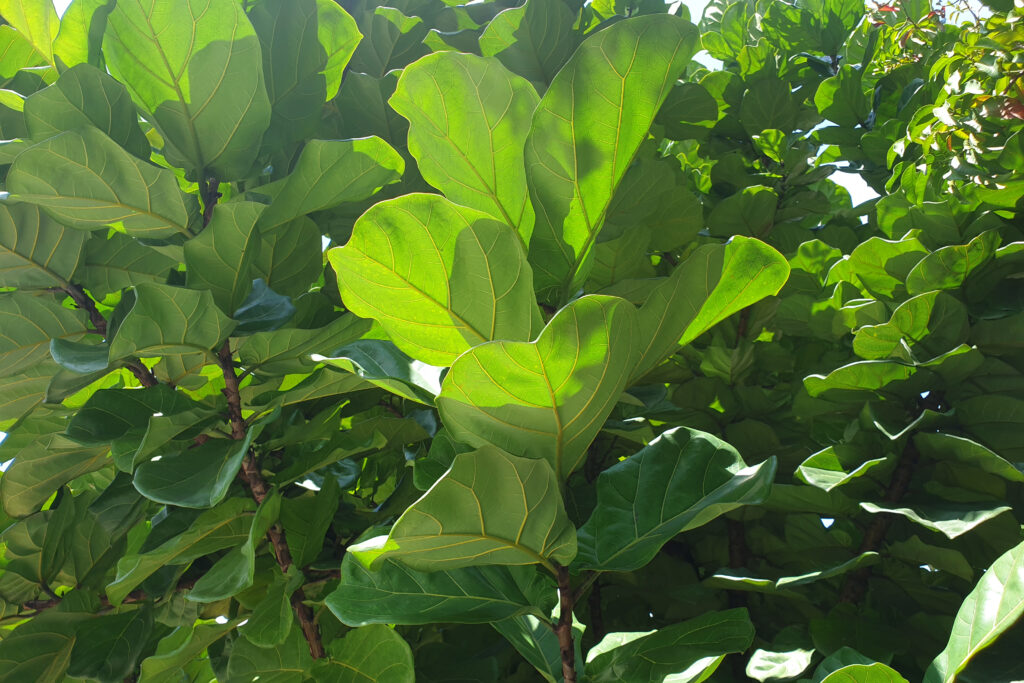
Outdoors, fiddle-leaf figs need conditions as close to their native habitat as possible.
©TY Lim/Shutterstock.com
In their native environment, Ficus lyrata are bathed in bright light with shelter from tall rainforest trees, lots of humidity in the air, and a rich loamy forest floor to fertilize it. Replicate this as far as possible for the healthiest outdoor Ficus lyrata.
Outdoor fiddlers can reach 50-60 feet tall in tropical and sub-tropical areas. In the U.S. they best suit growing zones 9-11 but they can tolerate cooler zones if they are brought indoors for winter.
Spider mites and aphids may cause problems outdoors. The best organic ways to be rid of them are soapy water to dislodge the adults and neem oil or citrus-infused water to destroy eggs. Encouraging ladybugs and songbirds to predate on them is the most eco-friendly treatment for tall fiddlers.
If you have a suitable sheltered yet sunny spot in USDA growing zones 9-11, or a moveable container you should read up on outdoor fiddle-leaf fig trees here. This guide will help you choose the right position and how to deal with seasonal changes.
Light Requirements

Between six and eight hours of indirect sunlight a day will help ensure healthy growth for your fiddle-leaf fig.
©Kowit Phatipreechakul/Shutterstock.com
Ficus lyrata are west African natives, and the African sun is strong and bright. This means fiddlers need lots of light to thrive. Indoors, this may prove an issue. The best place to position a fiddle-leaf fig is near a sunny window that catches 6-8 hours of sunlight a day, but not in direct sunlight.
Even though Ficus lyrata grows outdoors in direct sun, window panes magnify light and this leads to burnt patches of rough brown foliage. Not only are they unattractive, but they can’t be fixed, and mold can more easily enter.
Here’s an in-depth guide to fiddle-leaf fig light requirements including some positioning suggestions, and rotation requirements.
If your windows face north or your space is gloomy a Ficus won’t thrive there, but don’t despair because horticultural lights can make a huge difference, extending light for hours to really boost a fiddler. When it’s getting enough light, a fiddle-leaf fig can grow to ten feet indoors, and put on at least one foot of growth each year.
How Often To Water a Fiddle-leaf Fig
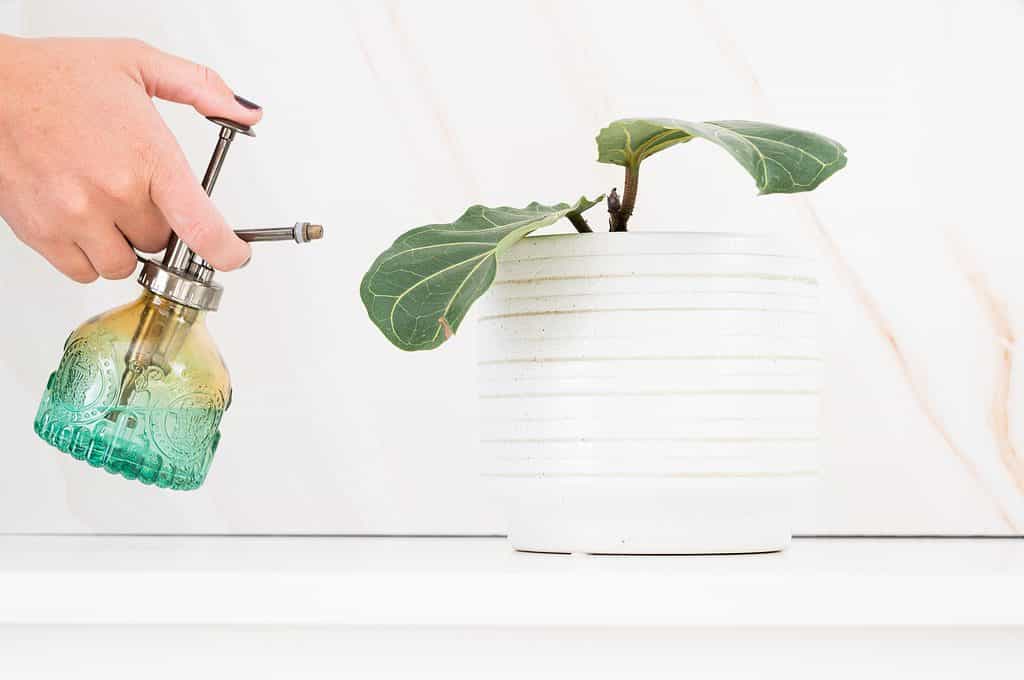
Like many plants, the amount of water you give a fiddle-leaf fig is just as important as the amount of light it receives.
©Cavan-Images/Shutterstock.com
The million-dollar Ficus lyrata question! Watering is one of the main aspects of fiddler care that folks worry about but it’s not hard to master. There are several ways to successfully water Ficus lyrata.
- Choose a day of the week and water your fiddler then. This is helpful if you tend to forget about houseplants. Set an alarm on your phone and stick to it.
- A much better way to water Ficus lyrata is the touch-and-test method.
The touch and test method requires a finger in the soil, up to an inch. If it feels damp, no water is needed. If it’s dry, then it’s time to water it. Watering small fiddlers is easy in the sink, but larger figgies need water added until it runs from the drainage holes. Check out our watering guide for step-by-step instructions.
Fiddle-leaf Fig Leaves: Why Are They Turning Brown?
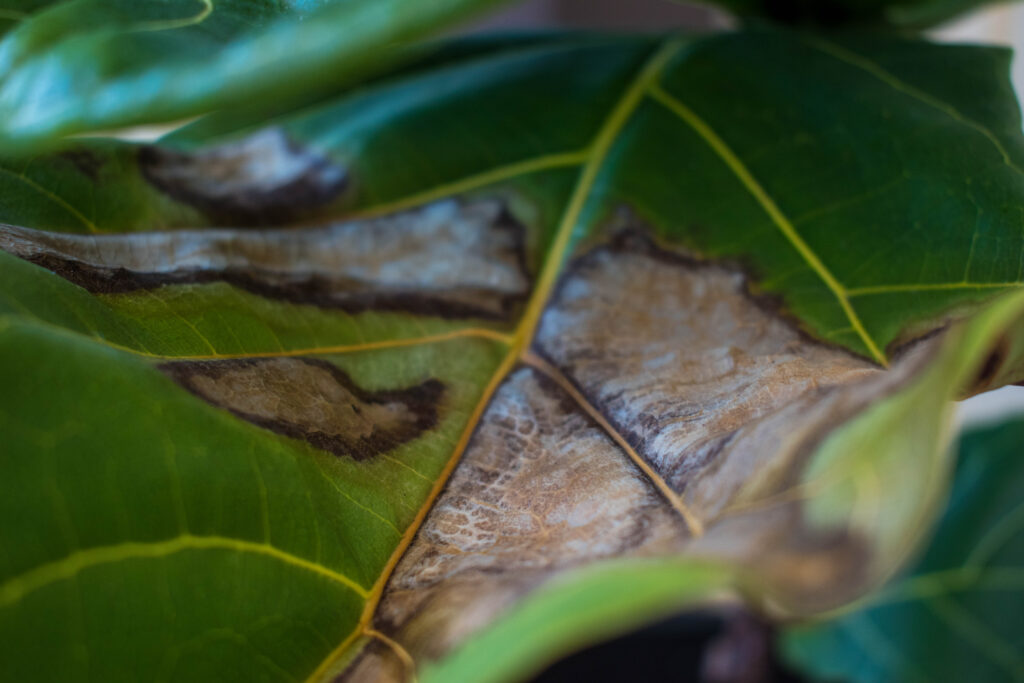
Browning leaves can indicate a number of problems your fiddle-leaf fig may be having.
©Kara Knight/Shutterstock.com
The majority of Ficus lyrata owners have dealt with brown leaves, it’s a sign your fiddler is unhappy and there are several reasons why this might be the case.
- If leaf tips are brown, it needs more or less water
- Rough areas on the leaf surface indicate sun or radiator scorch, cold shock, pests, or an uneven watering regime.
- You’ve given it too much fertilizer
- It’s struggling with pests or disease
Brown tips really ruin the aesthetics of a fiddle-leaf fig and although you can’t make them go away, you can prevent more from happening. We talk in-depth about brown leaves in this article.
How To Grow a Large Fiddle-leaf Fig

While indoor fiddle-leaf fig trees can reach about ten feet, outdoors, they can hit up to 50 to 60 feet.
©NARANAT STUDIO/Shutterstock.com
Want a big fig? Of course, you do! The problem is they are costly, so growing your own large fiddle-leaf fig is the obvious option.
A big fig is a healthy fig, so it’s essential to get those light and watering requirements in place. Indoor Ficus lyrata reach around ten feet, outdoor fiddlers around 50-60 feet, so you can reach some really lofty heights.
Repotting is essential when you want to grow a large fiddle-leaf fig because a small root ball equals a small trunk and leaves. Each year in summer, repot your Ficus lyrata into a pot that’s an inch or two bigger and backfill the empty space with fresh potting compost.
Don’t be tempted to save time and put a small Ficus lyrata into a large pot because it will put its energy into extending its root system, rather than its trunk and foliage. Roots first, then greenery, is the way plants grow. Roots will stop extending when they reach pot edges, and then the energy goes into the greenery, which is what you want to achieve a tall fiddle-leaf.
Regular plant fertilizer is important too. Potted houseplants and outdoor containers use up their nutrients very quickly and without more added, a Ficus just won’t grow.
Buy fertilizer and follow the instructions carefully because too much will turn its leaves yellow and even kill it. Outdoor fiddle-leaf figs benefit from a thick layer of organic mulch around the roots yearly. This not only gives them lots of nutrients, but it also traps water and cuts down weed competition too. Large fiddlers are glorious and the envy of plant lovers. For extra tips, check out this article on growing a huge fiddle-leaf fig.
Do Fiddle-leaf Figs Produce Fruit?
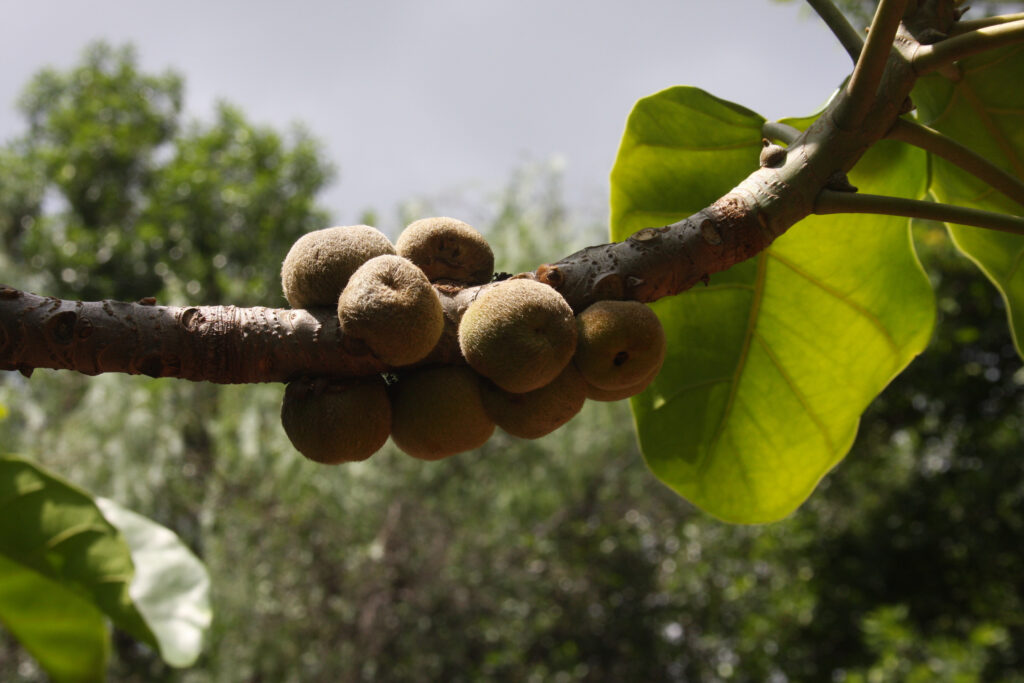
While they can grow fruit, fiddle-leaf fig trees aren’t likely to do so outside of their native African environment.
©Bettina Calder/Shutterstock.com
Many folks wonder if their Ficus lyrata will produce tasty fruit. It is a fig tree after all! Sadly, it’s not likely outside its native African environment.
It’s because figs need a specific pollinating wasp to pollinate their flowers, and the wasp lives in Africa. Another complication is that light levels outside its rainforest home just aren’t bright enough. Find out more here, including what you might be able to do to force fiddle-leaf fig fruits.
Discover the Meaning Behind Your Fiddle-leaf Fig
Fiddlers are attractive household and tropical garden plants that bring numerous health benefits, but they’re also feng shui plants that clear negative energy and boost wealth and relationships. Did you know it’s called a fiddle-leaf fig because its leaves are fiddle-shaped? There’s more here on the meaning of fiddle-leaf figs.
Are Ficus lyrata Difficult To Grow?

A lot of effort must be put into fiddle-leaf fig trees, but that effort is worth it.
©Rachata Teyparsit/Shutterstock.com
It’s true that fiddle-leaf figs have a grumpy reputation. If they don’t like their temperature, humidity level, watering regime, or pot size they may turn yellow or develop brown patches. Some Ficus lyrata even drop their leaves if they are moved across a room!
However, they are such beautiful leafy plants that purify the air, add biophilic benefits, and just look so fabulous they are worth the effort.
If you can imagine what a tropical lowland rainforest feels like, and try to replicate those surroundings, a Ficus lyrata will respond and reward you with huge, thick, green leaves for years.
Thank you for reading! Have some feedback for us? Contact the AZ Animals editorial team.

